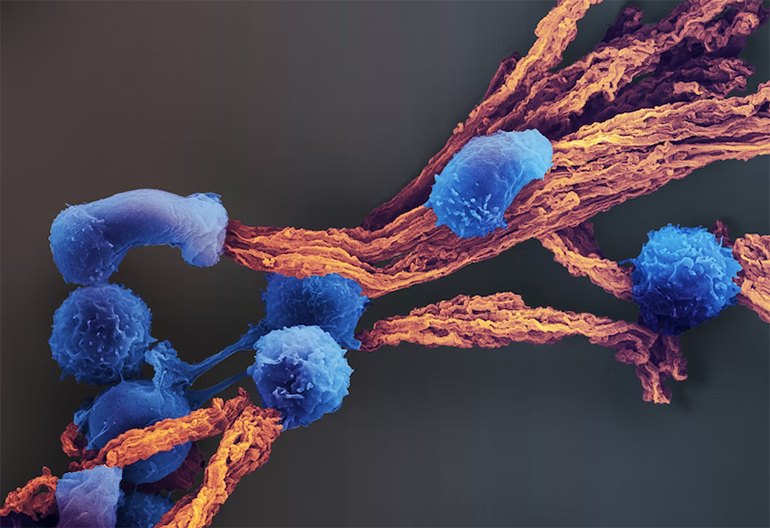Researchers at the Harvard Wyss Institute and the Dana-Farber Cancer Institute have developed a new method to prepare chimeric antigen receptor-T cells (CAR-T cells) for leukemia patients that could result in more effective treatment. CAR-T cells start life as T cells that are isolated from cancer patients, are stimulated and primed to recognize and attack cancer cells, expanded in number, and then reintroduced to the cancer patient with the goal that the cells will destroy their cancer. However, the technique works better in certain patients, and the researchers behind this latest technique have realized that T-cells from cancer patients do not behave like those from healthy subjects. They have invented a new technique to stimulate these patient-specific T cells using porous scaffolds that can present antigens to the cells in a way that maximizes their efficacy.
Turning a patient’s own white blood cells into cancer killing machines sounds like a dream come true. However, while CAR-T cells have a lot of potential, they don’t work that well for every cancer patient.
Traditionally, CAR-T therapy involves taking T cells from a cancer patient and then stimulating them using antigens that are present on rigid magnetic beads (called Dynabeads). However, these researchers have discovered that exposing such cells from cancer patients to levels of antigen that are too high can have negative effects on them, essentially ‘exhausting’ them and leaving them less effective.
Instead, these researchers have aimed to develop a more gentle way to present antigen to T cells that mimics what happens in the body more closely. They developed porous scaffolds called artificial antigen-presenting cell mimicking scaffolds (APC-ms), onto which they can seed the T cells and then present optimized doses of antigen in the scaffold structure. So far, the technique has resulted in CAR-T cells with enhanced and more consistent tumor-clearing properties.
“By exploring a precise, narrow range of stimulation doses made possible with APC-ms, we show that there is something like a personalized ‘sweet spot’ for patient-derived T cells that maximizes functionality and amplification, which is, on average, lower than the usual doses,” said David Zhang, one of the lead developers of the new technique. “The APC-ms approach functions much more naturally than Dynabeads, because highly controllable levels of T-cell signals are embedded into a lipid bilayer, which allows the CAR-T cells to push and pull at them as just as T cells usually do across the ‘immunological synapse’ between them and antigen-presenting cells when T cell stimulation is at its best.”
Study in journal Nature Communications: Enhancing CAR-T cell functionality in a patient-specific manner
Via: Wyss Institute
